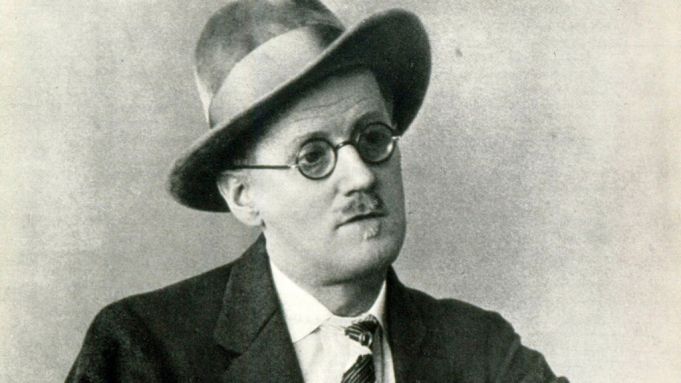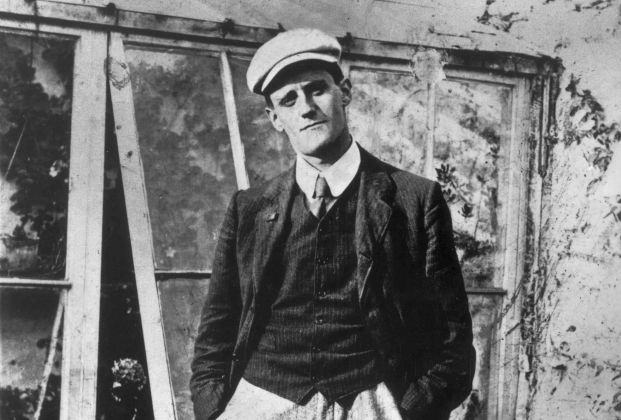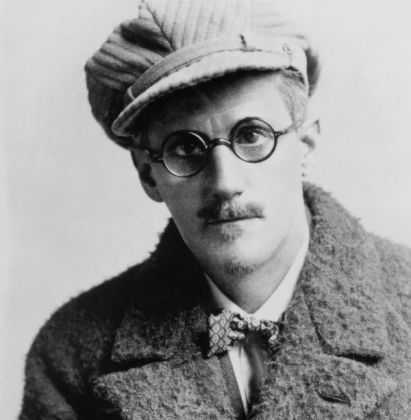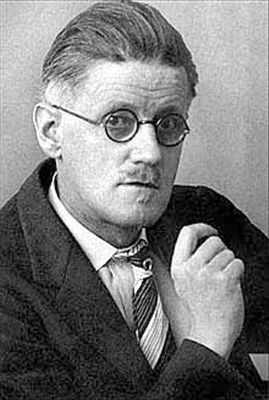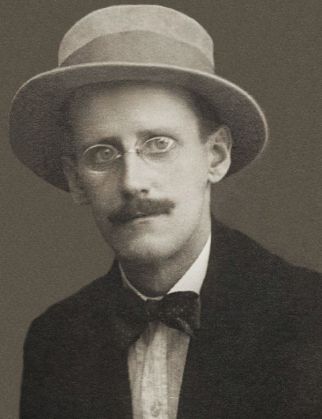James Joyce in Rome
Joyce may have been inspired to write The Dead during his unhappy time in Rome.
Rome was rather tense in 1906. Pope Pius X, still smarting from his loss of the papal states some 30 years earlier, refused to move beyond the sanctuary of St Peter’s while the Savoy family, his rivals and Italy’s new monarchs, built rather grand monuments, empty gestures of grandeur. Into this tension walked 24-year-old James Joyce; a man desperately trying to escape tensions of his own.
Since leaving Dublin, Joyce had been living in the Adriatic coastal town of Trieste, in northeast Italy. He had made quite an impact on the expatriate community and their hangers-on. Many people befriended Joyce and seemed endlessly willing to help him and his wife as they struggled to come to terms with the realities of raising a young family.
But Joyce was a restless and flamboyant character whose fondness for alcohol worried his wife and riled his English school employers. Joyce even lured his brother Stanislaus to Trieste, knowing full well the extra income would help maintain his indulgent lifestyle. To make matters worse, the school director absconded, leaving the school in disarray and Joyce without a regular income. There was always trouble in Trieste.
Perhaps Rome, with all its mysterious splendour and history, could inspire him to greatness. Destiny and fame surely awaited him. This was the city of the Caesars. It was where Keats died, where Goethe had roamed the Forum and Joyce’s great hero Ibsen spent many happy months. Joyce fixed his mind on the eternal city and went about securing a job for himself with little difficulty.
Aided by a letter of recommendation from a former lord mayor of Dublin, Timothy Harrington, Joyce was offered a temporary post in the bank of Nast, Kolb and Schumacher, which stood at the corner of Via del Corso and Via S. Claudio, today the site of a large department store.
Arriving in Rome on 31 July 1906, the Joyce family took lodgings on the third floor of a house at 52 Via Frattina, where today a plaque commemorates his stay. The accommodation was small but close to his work and the bars and cafés around the Spanish Steps. From the very beginning, however, his letters to Stanislaus speak negatively of the city and its people. According to Joyce, the area around the Colosseum was simply “like an old cemetery with broken columns of temples and slabs.”
In a letter to his brother, he wrote, “Rome reminds me of a man who lives by exhibiting to travellers his grandmother’s corpse.” It’s clear that the city’s former glories did nothing for such a modern man. But he clearly admits his own shortcomings and demonstrates his indignation in another letter to Stanislaus, lamenting: “I wish I knew something of Latin or Roman history. But it’s not worthwhile beginning now. So let the ruins rot.” His work in the bank was soul-destroying.
He often had to work 12 hours a day, copying up to 200 letters in an office where he had no interaction with the public. He had nothing but contempt for his colleagues who spoke endlessly of their ailments. His brother received constant updates on how difficult life in Rome was. And although Joyce was earning more money in the bank, he frequently begged his brother to send more cash.
By November, Joyce’s landlady was tiring of his excessive alcohol abuse and requested that he leave the accommodation on Via Frattina. Joyce expected to charm his way out of the tight spot but the signora stuck firmly to her guns and Joyce found himself homeless with his young family. After four days spent searching, the young writer moved into Via Monte Brianzo 51, near Piazza Navona.
By Christmas, Joyce was forced to take another job as a teacher, but it wasn’t enough and the family dined on pasta on a thoroughly depressing Christmas Day. While he struggled to make ends meet in Rome nothing came from his pen. He found no time to write and no immediate inspiration. The Roman ruins compounded his misery. He complained of nightmares involving “death, corpses, assassinations, in which I take an unpleasantly prominent part.”
The intrigues and gore of ancient Rome infiltrated his psyche and it seems he began to develop a strange appreciation of his native Dublin, something not so keenly felt since his departure. It was at this time that the ideas for his wonderful short story, The Dead, began their gestation.
Perhaps the simple Christmas lunch and signora Dufour’s apparently barbarous treatment of his family led to dreams of more lavish feasts and what the story’s hero Gabriel Conroy refers to as unique Irish hospitality. In the same breath Joyce, through Gabriel, a character all the while fixated on the attractions and trappings of continental Europe, acknowledges those things that Ireland has to offer the world by way of this tradition.
Rome’s somewhat crude irreverence for the dead who are constantly on display, whether through imperial Rome’s whimsical caesars or greedy popes, is in sharp contrast to the quiet, melancholy image of Dublin covered in snow. The romance and bombast of Michelangelo, Bernini and Borromini contrasts with the humble but no less passionate Michael Furey in The Dead who, we find out, courted Gabriel’s wife Gretta and died of consumption but may, as Gretta reveals, have “died for me.”
Eventually, Joyce had had enough and he decided to leave Rome. The day before leaving he was given his last pay cheque from his bank job, and splashed out on a few farewell drinks. As he drank, two men managed to get a look inside his wallet and when Joyce left the café they attacked and robbed him. Luckily, he had left some of his pay at his lodgings and with it he packed his son and his wife onto a train for Trieste and left Rome. He never returned.
By Jonathan deBurca Butler
Bloomsday, to celebrate the events in Joyce’s masterpiece Ulysses, is marked on 16 June each year. In Italy, the 2024 edition of the Trieste Joyce School will be held from 30 June-5 July, for details see website.
This article first appeared in the June 2011 edition of Wanted in Rome magazine.
General Info
View on Map
James Joyce in Rome
Viale Città d'Europa, 52, 00144 Roma RM, Italy



